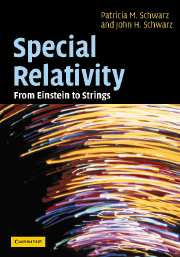Book contents
- Frontmatter
- Contents
- Preface
- Part I Fundamentals
- 1 From Pythagoras to spacetime geometry
- 2 Light surprises everyone
- 3 Elements of spacetime geometry
- 4 Mechanics in spacetime
- 5 Spacetime physics of fields
- 6 Causality and relativity
- Part II Advanced Topics
- Appendix 1 Where do equations of motion come from?
- Appendix 2 Basic group theory
- Appendix 3 Lie groups and Lie algebras
- Appendix 4 The structure of super Lie algebras
- References
- Index
1 - From Pythagoras to spacetime geometry
Published online by Cambridge University Press: 06 July 2010
- Frontmatter
- Contents
- Preface
- Part I Fundamentals
- 1 From Pythagoras to spacetime geometry
- 2 Light surprises everyone
- 3 Elements of spacetime geometry
- 4 Mechanics in spacetime
- 5 Spacetime physics of fields
- 6 Causality and relativity
- Part II Advanced Topics
- Appendix 1 Where do equations of motion come from?
- Appendix 2 Basic group theory
- Appendix 3 Lie groups and Lie algebras
- Appendix 4 The structure of super Lie algebras
- References
- Index
Summary
Hands-on exercise: measuring the lengths of lines
Physics is about describing the physical world. In physics courses we get used to doing this using mathematics, and sometimes it can seem as if the mathematics is the physics. But our goal is to learn about the physical world, and so sometimes we have to just put the math aside and let the physical world be our teacher. It is in this spirit that we begin this chapter with a hands-on exercise that requires measuring the physical world with your hands. To complete this exercise you will need the following supplies:
Three cloth or paper measuring tapes, preferably from computer printouts of the file measures.html included on the CD that comes with this book.
Some Scotch tape.
One large spherical object such as a large melon, a beach ball or a globe, with a diameter roughly between 15 and 20 cm.
One flat table or desk.
A pencil and some graph paper.
If you have printed out the page with the measuring tapes on them from the CD, cut them out with the edges of the paper aligned with the measuring edges of the printed tapes. Tape measures A and B should be taped together at a right angle to one another with the measuring edges facing one another. We will call this taped-together object the Side Measurer.
- Type
- Chapter
- Information
- Special RelativityFrom Einstein to Strings, pp. 3 - 20Publisher: Cambridge University PressPrint publication year: 2004

